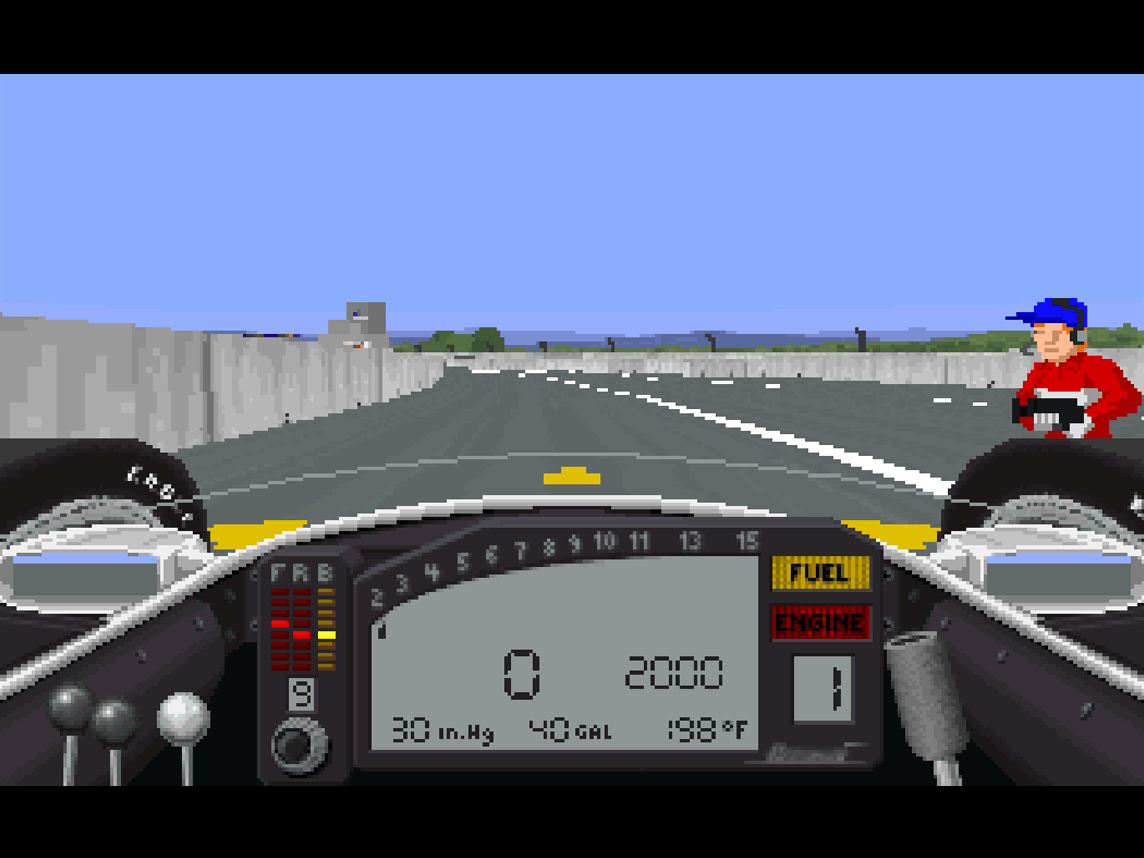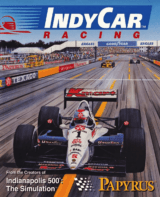Developed by Papyrus Design Group, this game made its debut in 1993. Papyrus, a team consisting of David Kaemmer and Omar Khudari, had previously crafted the acclaimed “Indianapolis 500: The Simulation,” released in 1989.
The Realistic Racing Experience
IndyCar Racing aimed to provide a realistic simulation of the 1993 PPG Indy Car World Series. The game offered a selection of contemporary chassis and engines, allowing players to dive into the world of competitive racing.
With eight circuits available for individual races or full championship seasons, the game provided an authentic racing experience.
Expansion Packs: Subsequent expansion packs enriched the gaming experience with an additional seven tracks and the legendary Indianapolis Motor Speedway.
A Sequel
Two years after the release of IndyCar Racing, a sequel emerged, aptly named IndyCar Racing II.

Exploring Gameplay
The game presented players with various exciting gameplay options:
Full Championship Season
You could opt for a full Championship season that included all available tracks on your computer. This option allowed you to compete in practice, qualifying, and warm-up sessions while customizing your car’s performance both on and off the track.
For those seeking a challenge, you could go head-to-head with another player, connecting two computers via modems or a null-modem cable.
Meeting the Drivers
IndyCar Racing featured most of the drivers and teams from the 1993 season. However, there was a notable absence—Nigel Mansell.
The game did include famous drivers like Mario Andretti and Danny Sullivan, albeit in generic liveries.
Indianapolis Motor Speedway: This expansion introduced a paint shop feature, allowing users to create their own liveries, adding a personal touch to the racing experience.

Qualifying Rounds
Qualifying sessions in IndyCar Racing came in two main types:
Road Courses
For road courses, a ten-minute “open session” allowed players to complete as many laps as desired. This format gave players more freedom to perfect their lap times.
Oval Tracks
On oval tracks, only two “flying laps” were permitted, with the average speed from the better of these two laps determining the starting position.
Indianapolis Motor Speedway: This track introduced a unique qualifying format—four flying laps, with the average speed calculated from all four laps.
In all cases, players began the qualifying session from the pit lane and automatically started from the back of the grid. Notably, the qualifying positions for the opposition drivers were pre-determined. Even if other cars were on the track during a player’s qualifying attempt, they would not improve their lap times.
Skipping the qualifying session left the player at the back of the grid.
The Thrill of the Race
Races in IndyCar Racing kicked off with a standing start, with cars positioned two abreast on most tracks, and three abreast at the legendary Indianapolis Motor Speedway. A “pit board” displayed crucial information each time a player crossed the start/finish line.
Championship Seasons
IndyCar Racing allowed players to immerse themselves in a full series of race weekends at every available track on their computer. The results of each race contributed to the Championship standings. The game automatically generated a season schedule based on the range of tracks installed.
In cases of a tie for the most laps led, the point was awarded to the car that finished the race in the highest position. Cars that crashed or retired late in a race but remained in the top 12 at the end were classified and awarded the appropriate number of points.

Reliving the Race
IndyCar Racing introduced an impressive instant replay feature. While the earlier “Indianapolis 500: The Simulation” offered a limited 20-second replay, IndyCar Racing stored approximately an hour of footage from multiple camera angles, allowing players to relive the action from various perspectives.
However, once cars retired or crashed and were removed from the track, they could no longer be selected for viewing. The game permitted an unlimited number of replays to be saved.
Crashes on the Track
In IndyCar Racing, any opponent had the potential to crash during a race, subject to specific constraints. Opting for the “yellow flags” from the “OPTIONS/REALISM” menu would trigger caution periods, reducing the speed and prohibiting on-track overtaking.
Pit stops were still permitted during these caution periods, and cars could retire due to mechanical failures.
Racing under green-flag conditions would resume after a few laps, typically when the race leader entered the home straight. Crashed cars would be labeled as “Crashed” on the summary and full standings charts.
Conclusion
IndyCar Racing offers a focus on realism and an array of gaming options. While challenges and competition were at the core, the game’s replay feature allowed players to savor their finest moments.
Play IndyCar Racing online
Now you can play IndyCar Racing online, in a web browser!

